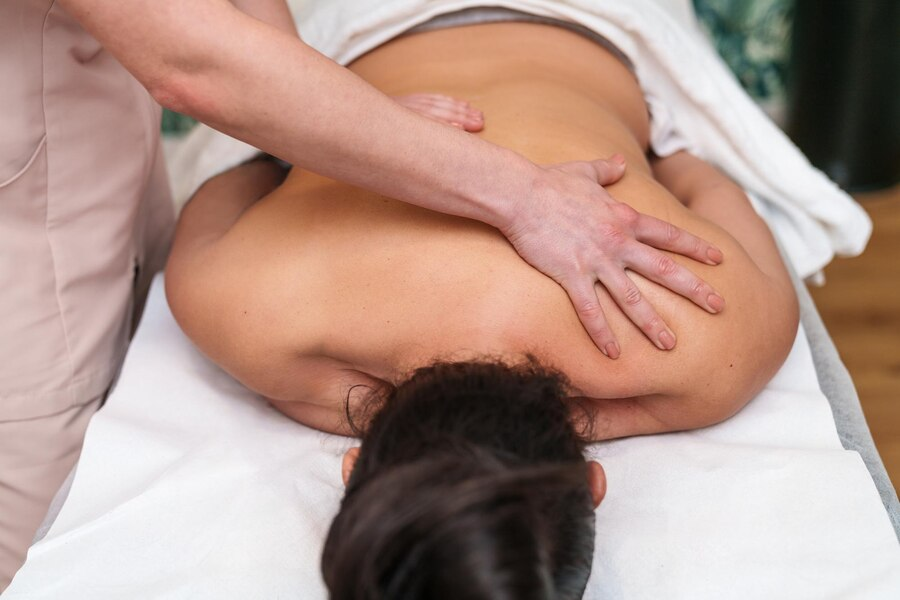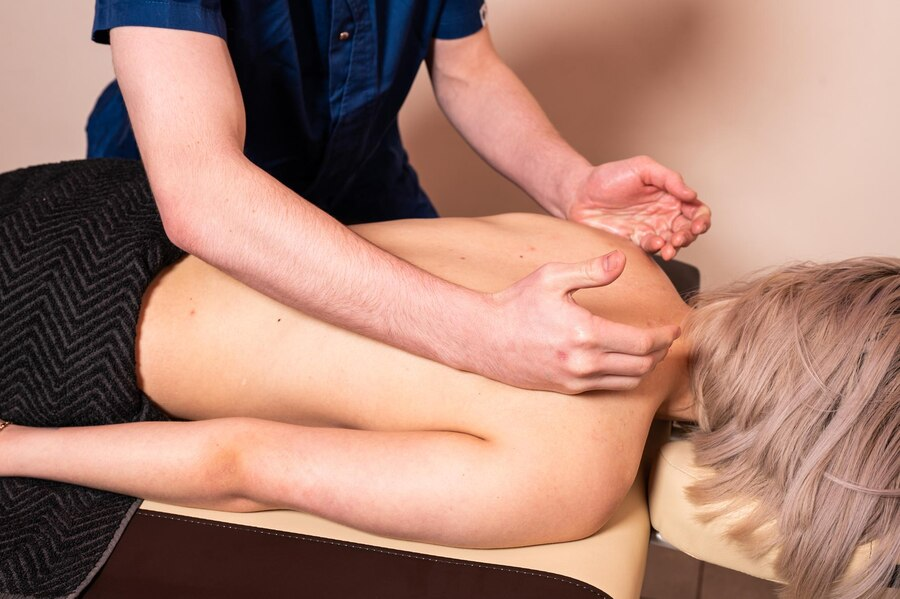In the world of chiropractic care, one technique that stands out for its precision and effectiveness is Soft Tissue Mobilization (STM). This targeted therapy is increasingly recognized for its ability to alleviate pain, enhance mobility, and support overall musculoskeletal health. Whether you’re dealing with chronic pain, recovering from an injury, or seeking to improve your physical performance, understanding how STM works and how it can benefit you is essential.
What is Chiropractic Soft Tissue Mobilization?
Chiropractic Soft Tissue Mobilization is a hands-on therapy that focuses on manipulating the soft tissues of the body—primarily muscles, tendons, and ligaments. Unlike traditional chiropractic adjustments that primarily target the spine, STM is geared towards treating the surrounding soft tissues to improve function and reduce discomfort.
This technique involves applying varying degrees of pressure and movement to specific areas of the body. The goal is to release tension, break down scar tissue, and restore normal function to the affected tissues. By addressing the soft tissues directly, STM can complement other chiropractic treatments and provide a more comprehensive approach to healing.
How Does Soft Tissue Mobilization Work?
STM works through a combination of techniques, each designed to address different aspects of soft tissue dysfunction:
Manual Pressure
Applying deep pressure to targeted muscle areas can effectively release stubborn knots and alleviate muscle tightness. This technique enhances blood circulation in the affected region, which accelerates healing and reduces discomfort by improving nutrient and oxygen delivery.
Stretching and Manipulation
Stretching involves gently lengthening shortened or tight muscles to enhance overall flexibility and range of motion. Manipulation, on the other hand, focuses on adjusting and moving tissues to restore their normal movement patterns, reducing stiffness and improving functional capacity.
Frictional Massage
Frictional massage involves applying focused friction to the soft tissues, which aids in breaking down scar tissue and adhesions that limit movement. By increasing tissue mobility and reducing restrictions, this technique enhances overall function and alleviates pain.
Active Release Techniques (ART)
ART integrates manual therapy with precise patient movements to address specific muscle and joint issues. This method targets the underlying causes of pain by treating affected tissues and restoring their normal function, thus alleviating discomfort and improving mobility.
Benefits of Chiropractic Soft Tissue Mobilization
The benefits of STM extend beyond immediate relief; they play a crucial role in long-term musculoskeletal health:
STM offers substantial relief from pain linked to muscle strains, ligament sprains, and chronic conditions such as fibromyalgia. By directly targeting the source of pain and reducing muscle tension, STM effectively alleviates discomfort, enhancing overall quality of life for those experiencing persistent pain.
Improved Mobility
Tight and restricted soft tissues can severely limit movement and flexibility, impacting daily activities. STM works by stretching and mobilizing these tissues, significantly enhancing overall range of motion and functional capacity. This increased mobility helps individuals move more freely and comfortably.
Faster Recovery
For individuals recovering from injuries, STM can accelerate the healing process by boosting circulation and minimizing scar tissue formation. This approach promotes faster recovery, enabling a quicker return to normal activities and reducing the likelihood of future injuries.
Enhanced Athletic Performance
Athletes often incorporate STM into their routines to maintain optimal muscle function and prevent injuries. Regular STM sessions ensure that muscles and tendons remain flexible, strong, and unrestricted, which can lead to improved athletic performance and reduced downtime from sports-related injuries.
Postural Correction
Poor posture often leads to imbalances and strain on soft tissues, causing discomfort and potential injury. STM helps correct these postural imbalances by releasing tension in the affected areas and promoting proper alignment, thereby supporting better overall posture and reducing related issues.
Stress Reduction
Chronic stress can manifest physically as muscle tension and discomfort. STM helps to alleviate these symptoms, providing both physical and mental relaxation.

Conditions Treated with Soft Tissue Mobilization
STM is versatile and can be used to address a variety of conditions:
- Muscle Strains and Sprains: Injuries to muscles and ligaments can benefit from the targeted approach of STM, which helps to reduce pain and promote healing.
- Tendonitis: Inflammation of tendons can be eased through STM techniques that reduce tension and improve blood flow to the affected area.
- Chronic Pain Syndromes: Conditions like myofascial pain syndrome and fibromyalgia can be managed with STM, as it helps to relieve muscle tightness and improve function.
- Scar Tissue and Adhesions: STM helps to break down scar tissue and adhesions that may have formed as a result of previous injuries or surgeries.
- Repetitive Strain Injuries: For conditions like carpal tunnel syndrome or tennis elbow, STM can alleviate pain and improve mobility by targeting the affected soft tissues.
What to Expect During an STM Session
If you’re considering STM as part of your chiropractic care, here’s what you can expect during a session:
IInitial Assessment
Your chiropractor will start by evaluating your condition and discussing your symptoms with you. This thorough assessment helps pinpoint the specific areas needing attention and allows the chiropractor to customize the treatment to your unique needs.
Treatment Plan
Following the assessment, your chiropractor will formulate a personalized treatment plan incorporating STM techniques tailored to address your particular condition. This plan outlines the specific approaches and goals for your therapy, ensuring a targeted and effective treatment.
Hands-On Therapy:
During the session, your chiropractor will apply varying degrees of pressure, stretching, and manipulation to your soft tissues using their hands. The intensity of the pressure can range from gentle to deep, depending on the therapeutic objectives and your comfort level.
Patient Feedback
Effective communication with your chiropractor is crucial during the session. Inform them if you experience any discomfort or if certain techniques seem particularly beneficial. This feedback helps adjust the treatment to maximize its effectiveness and ensure your comfort.
Post-Treatment Care
After the session, your chiropractor might suggest specific stretching exercises, self-care practices, or lifestyle adjustments to enhance your recovery and prolong the benefits of STM. These recommendations are designed to support your ongoing musculoskeletal health and well-being.
Self-Care Tips for Enhancing STM Results
To maximize the benefits of STM and support your overall musculoskeletal health, consider incorporating these self-care tips:
- Stay Hydrated: Drinking plenty of water helps to flush out toxins from the body and supports muscle recovery.
- Stretch Regularly: Incorporate stretching exercises into your routine to maintain flexibility and prevent muscle tightness.
- Maintain Good Posture: Pay attention to your posture throughout the day to avoid straining your muscles and soft tissues.
- Exercise Regularly: Engage in regular physical activity to keep your muscles strong and balanced.
- Use Heat or Cold Therapy: Applying heat or cold packs as recommended by your chiropractor can help manage pain and reduce inflammation.
- Follow Your Chiropractor’s Advice: Adhere to any recommendations or exercises provided by your chiropractor to enhance the results of your STM treatment.
Targeted Therapy for Optimal Recovery and Relief
Targeted therapy in chiropractic care is essential for achieving optimal recovery and relief from musculoskeletal issues. By focusing on specific areas of pain and dysfunction, chiropractors can apply precise techniques that address the root causes of discomfort. This personalized approach involves a thorough assessment of the patient’s condition, followed by the application of specialized soft tissue mobilization methods. Techniques such as myofascial release, trigger point therapy, and instrument-assisted soft tissue mobilization (IASTM) are used to break down scar tissue, reduce inflammation, and improve blood flow, promoting faster healing and enhanced mobility.
The benefits of targeted therapy extend beyond immediate pain relief. By addressing the underlying soft tissue restrictions, chiropractors help prevent future injuries and chronic conditions. This holistic approach ensures that patients not only experience a reduction in pain but also achieve long-term improvements in their overall physical function. With targeted therapy, patients receive a customized treatment plan that caters to their specific needs, leading to more effective and lasting results. Whether recovering from an injury or managing chronic pain, targeted therapy offers a comprehensive solution for optimal recovery and relief.
Conclusion
Integrative Chiropractic in Overland Park provides specialized care through targeted soft tissue mobilization therapy. This approach focuses on specific areas of pain and dysfunction, employing techniques like myofascial release and trigger point therapy to break down scar tissue and enhance mobility. By addressing the root causes of discomfort, our personalized therapy promotes faster healing and long-term relief. Whether you’re recovering from an injury or managing chronic pain, our customized treatment plans ensure effective and lasting results. For optimal recovery and relief, contact Integrative Chiropractic at 913-451-7500 and experience the benefits of targeted therapy.

